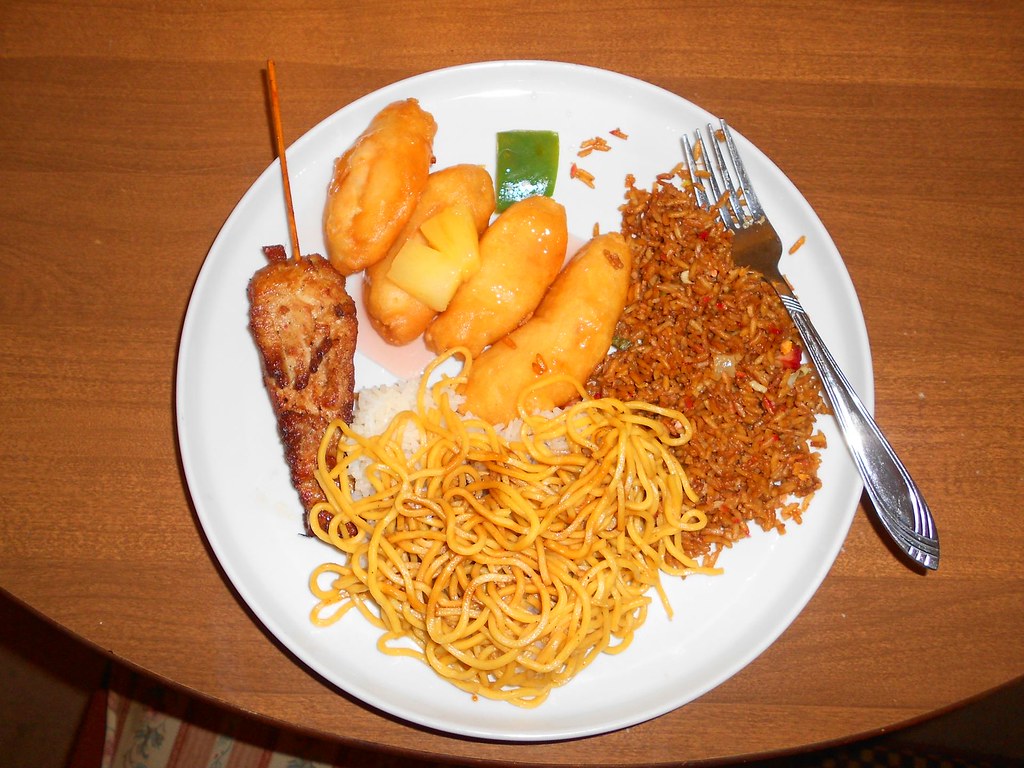Exploring Chinese Food – Chinese cuisine has a long history and a diverse culture, which is reflected in the wide variety of Chinese food. From spicy Sichuan cuisine to delicate Cantonese dishes, China has a unique food culture that is worth exploring. In this article, we will delve into the intricacies of Chinese food culture, from its history to the different regional cuisines and ingredients that make Chinese cuisine so special.
Exploring Chinese Food / Exploring Chinese Food
A Brief History of Chinese Food Culture
Chinese food culture has a history of more than 5,000 years, dating back to the Neolithic Age. Ancient Chinese people believed in the concept of yin and yang, which refers to the balance of two opposing forces in the universe. This principle was also applied to Chinese cuisine, where dishes were created with a balance of flavors, textures, and colors.
During the Han Dynasty (206 BCE-220 CE), cooking techniques and recipes began to be documented in writing, and food culture became more refined. The Tang Dynasty (618-907 CE) is considered the golden age of Chinese cuisine, where lavish banquets were hosted by the elite, and cooking was elevated to an art form.
Regional Cuisines of China
China is a vast country with a diverse range of regional cuisines. Some of the most famous regional cuisines include:
- Sichuan Cuisine: Known for its spicy and bold flavors, Sichuan cuisine is one of the most popular regional cuisines in China. The use of Sichuan peppercorns gives the dishes a unique numbing sensation, while chili peppers provide the heat.
- Cantonese Cuisine: Cantonese cuisine is characterized by its delicate flavors and emphasis on freshness. Steaming and stir-frying are the main cooking techniques used, and seafood is a popular ingredient.
- Shandong Cuisine: Shandong cuisine is known for its hearty and flavorful dishes, such as braised sea cucumber and sweet and sour carp. The use of vinegar is a key ingredient in Shandong cuisine, giving the dishes a distinctive tangy flavor.
- Huaiyang Cuisine: Originating from the Jiangsu and Zhejiang provinces, Huaiyang cuisine is known for its meticulous preparation and elegant presentation. Soups, stews, and braised dishes are popular, and the cuisine places a strong emphasis on seafood and freshwater fish.
Sichuan Cuisine
Sichuan cuisine, also known as Szechuan cuisine, is famous for its bold, spicy flavors and use of Sichuan peppercorns. Some of the most famous Sichuan dishes include mapo tofu, kung pao chicken, and hotpot.
Hunan Cuisine
Hunan cuisine, also known as Xiang cuisine, is known for its hot and sour flavors and use of smoked and pickled ingredients. Some of the most famous Hunan dishes include smoked bacon with garlic shoots, spicy stir-fried chicken, and Mao’s braised pork.
Shandong Cuisine
Shandong cuisine, also known as Lu cuisine, is known for its emphasis on seafood and soups. It is characterized by its light, salty flavors and use of vinegar and ginger. Some of the most famous Shandong dishes include braised abalone, crispy skin chicken, and seafood dumplings.
Jiangsu Cuisine
Jiangsu cuisine, also known as Su cuisine, is known for its delicate, sweet flavors and emphasis on seafood and freshwater ingredients. Some of the most famous Jiangsu dishes include sweet and sour spare ribs, crispy fried Mandarin fish, and hairy crab.
Zhejiang Cuisine
Zhejiang cuisine, also known as Hangzhou cuisine, is known for its light, fresh flavors and emphasis on seafood and bamboo shoots. Some of the most famous Zhejiang dishes include West Lake fish in vinegar gravy, Dongpo pork, and beggar’s chicken.
Fujian Cuisine
Fujian cuisine, also known as Min cuisine, is known for its light, delicate flavors and emphasis on seafood and soups. Some of the most famous Fujian dishes include Buddha Jumps Over the Wall, fish balls in soup, and steamed pork with rice flour.
Anhui Cuisine
Anhui cuisine, also known as Hui cuisine, is known for its rustic, hearty flavors and emphasis on wild herbs and mushrooms. Some of the most famous Anhui dishes include stewed soft-shelled turtle, bamboo shoots with ham, and fragrant crispy duck.
Peking Duck
Peking duck is a famous Beijing dish that is characterized by its crispy skin and tender meat. The duck is roasted in a special oven and served with thin pancakes, scallions, and a sweet bean sauce.
Hotpot
Hotpot is a popular Chinese dish that is enjoyed in many regions, particularly in Sichuan. It consists of a pot of simmering broth that is used to cook a variety of ingredients, such as thinly sliced meat, seafood, and vegetables, at the table. It is often served with dipping sauces to enhance the flavor.
Dumplings
Dumplings are a staple in Chinese cuisine and can be found in many regional variations. They are typically made with a thin dough wrapper that is filled with a mixture of meat or vegetables and then steamed or boiled. Some of the most popular types of Chinese dumplings include xiaolongbao, jiaozi, and wontons.
Kung Pao Chicken
Kung Pao chicken is a famous Sichuan dish that is known for its spicy and savory flavors. It is made with diced chicken, peanuts, vegetables, and chili peppers, and is often served with steamed rice.
Ma Po Tofu
Ma po tofu is another famous Sichuan dish that is made with soft tofu, ground pork, and Sichuan peppercorns. It is known for its spicy and numbing flavor, and is often served with steamed rice.
Soy Sauce
Soy sauce is a staple ingredient in Chinese cuisine and is used to add depth and umami flavor to many dishes. It is made from fermented soybeans and can vary in color and flavor depending on the production method.
Ginger
Ginger is a common ingredient in many Chinese dishes and is known for its pungent and slightly sweet flavor. It is often used to add warmth and depth to soups, stews, and stir-fries.
Sichuan Peppercorns
Sichuan peppercorns are a key ingredient in Sichuan cuisine and are known for their unique numbing flavor. They are often used to add heat and complexity to dishes such as ma po tofu and kung pao chicken.
Rice Vinegar
Rice vinegar is a mild and slightly sweet vinegar that is commonly used in Chinese cooking. It is often used to add tanginess to stir-fries, marinades, and dipping sauces.
Ingredients in Chinese Cuisine
Chinese cuisine features a wide range of ingredients, including vegetables, meats, and seafood. Some of the most commonly used ingredients in Chinese cuisine include:
- Rice: Rice is a staple food in China, and it is often served with dishes such as stir-fries and stews.
- Soy sauce: Soy sauce is a key ingredient in Chinese cuisine, and it is used to flavor dishes such as stir-fries and marinades.
- Ginger: Ginger is used in many Chinese dishes, and it provides a spicy and pungent flavor.
- Garlic: Garlic is another common ingredient in Chinese cuisine, and it is used to add flavor to dishes such as soups and stir-fries.
- Tofu: Tofu, made from soybeans, is a popular ingredient in Chinese vegetarian dishes, as well as meat-based dishes.
Conclusion
In conclusion, Chinese food culture is a rich and diverse topic that has a history spanning thousands of years. From the bold flavors of Sichuan cuisine to the delicate flavors of Cantonese dishes, Chinese cuisine has something for everyone. Whether you are a food lover or simply interested in learning more about Chinese culture, exploring Chinese cuisine is a great way to experience the traditions and flavors of this fascinating country.




